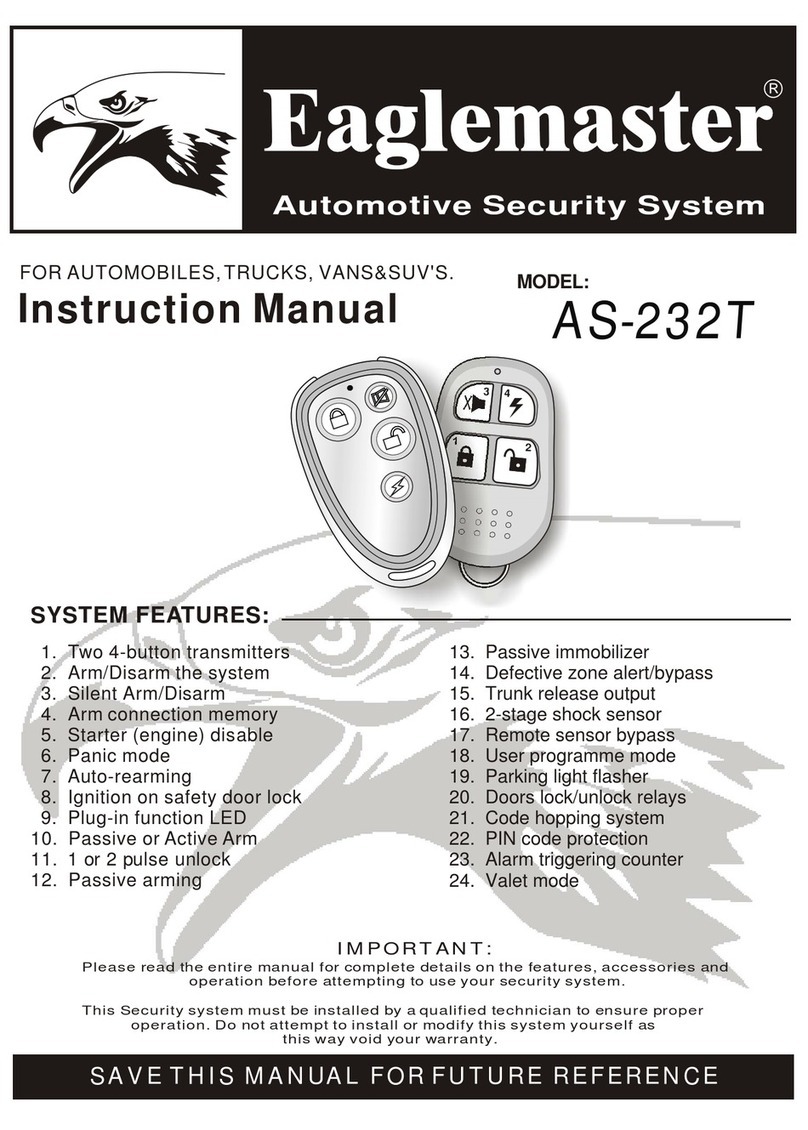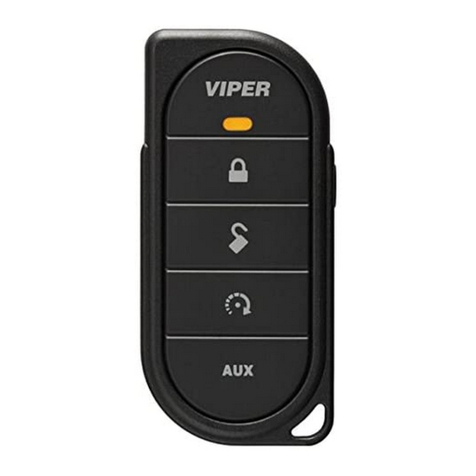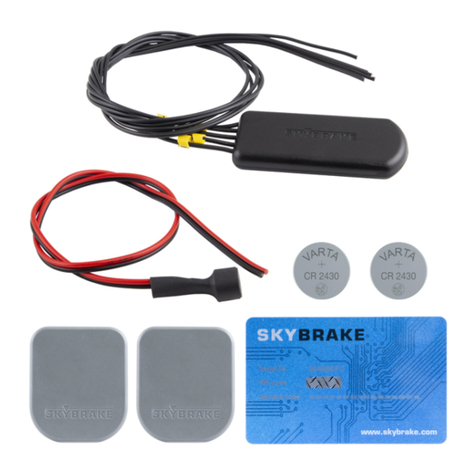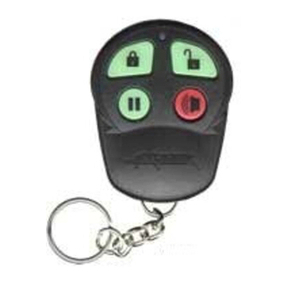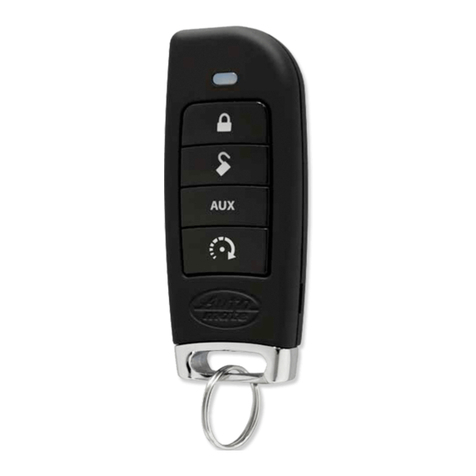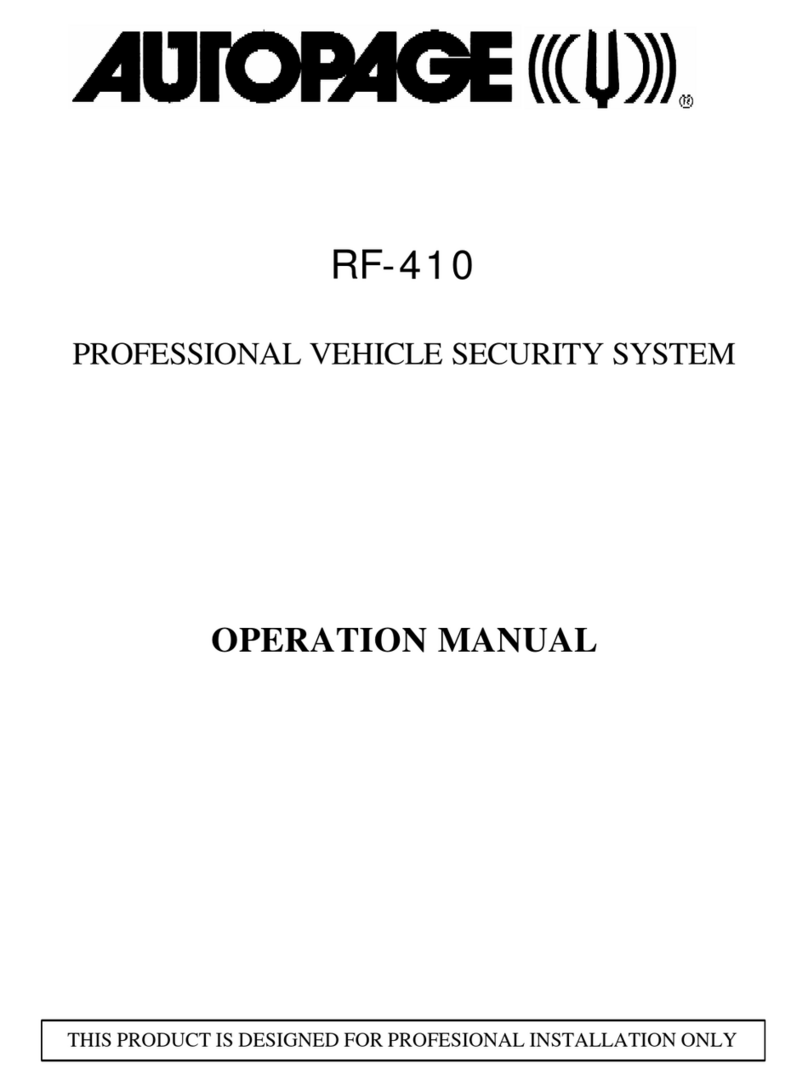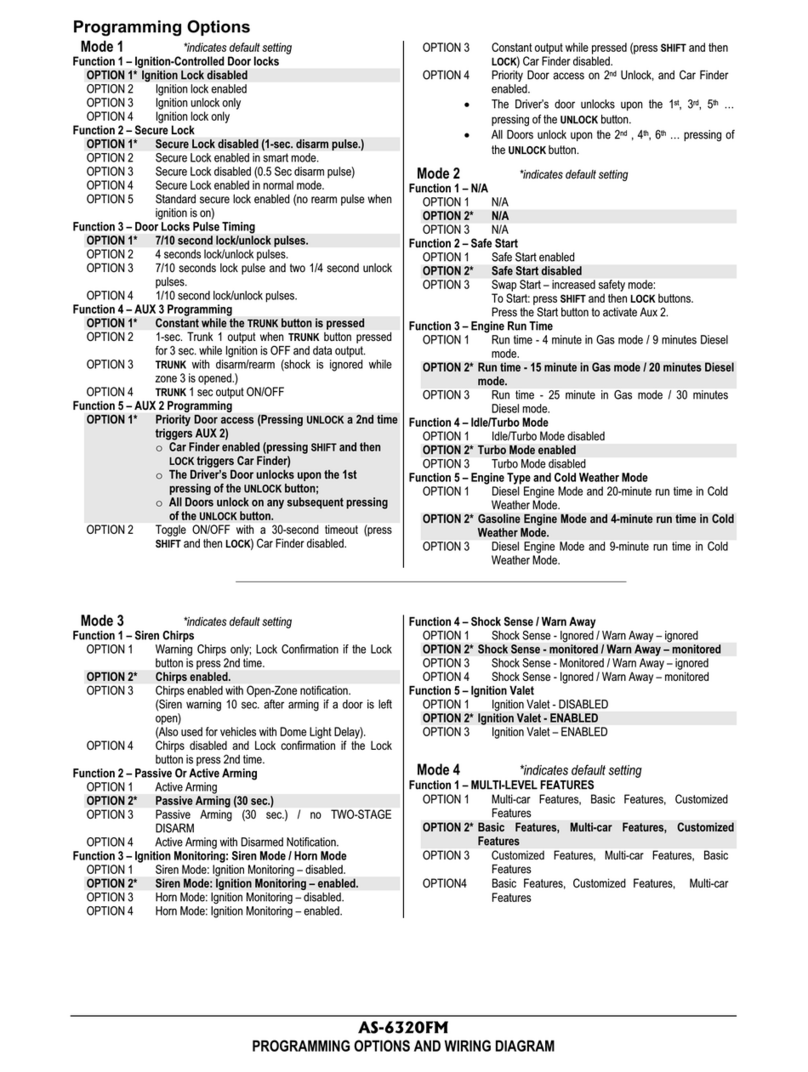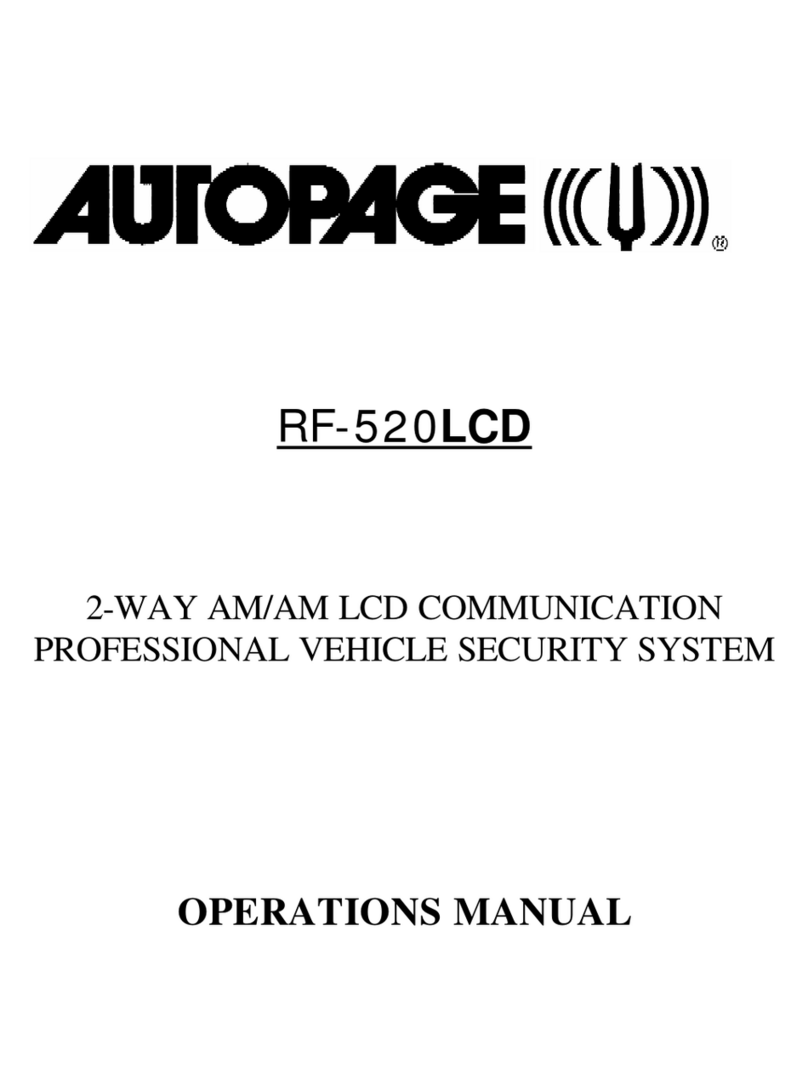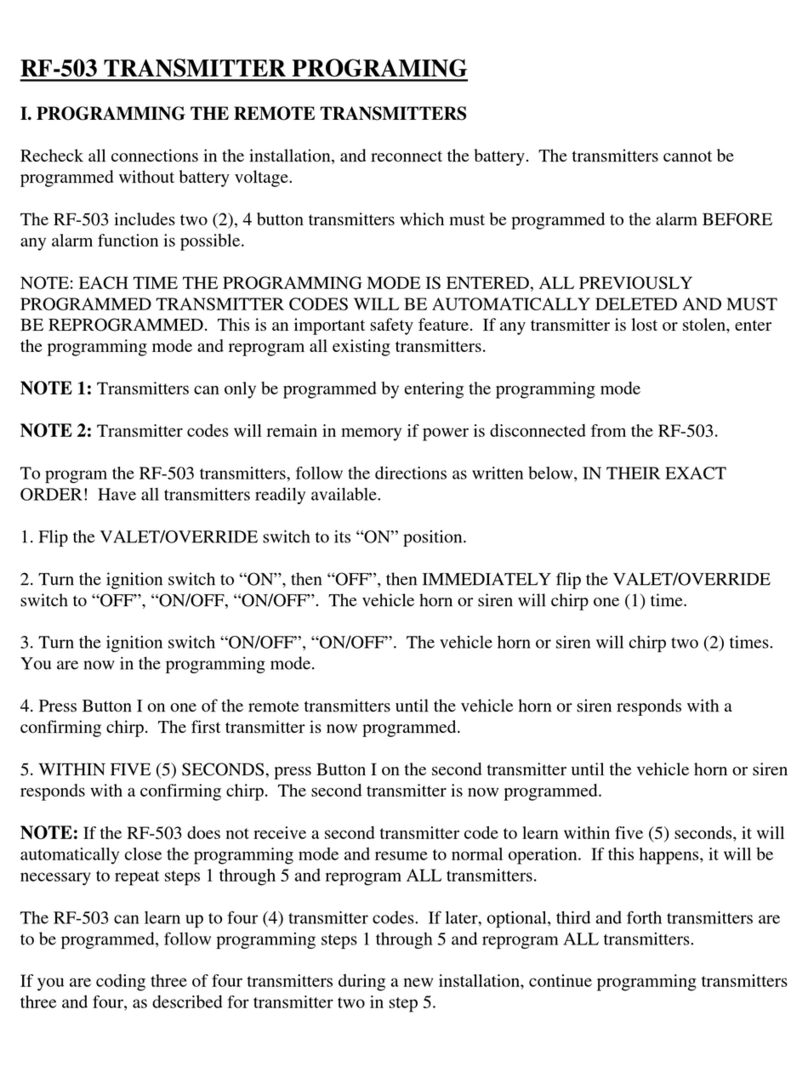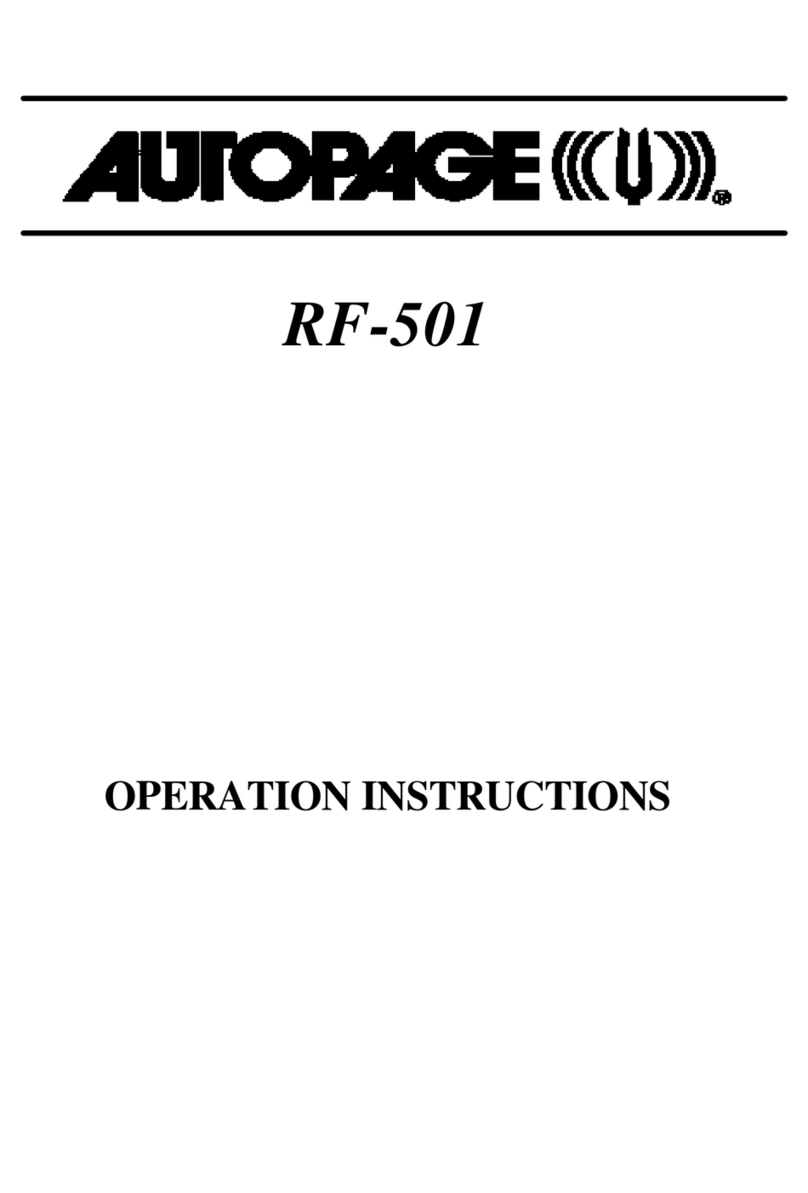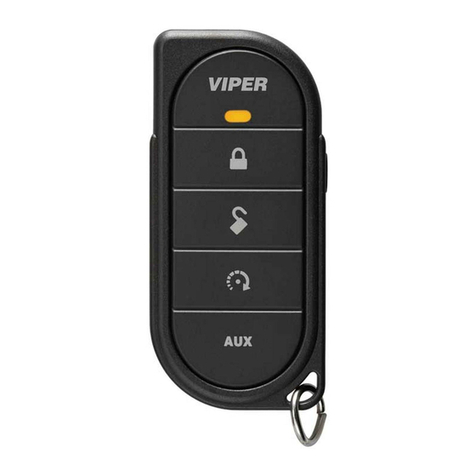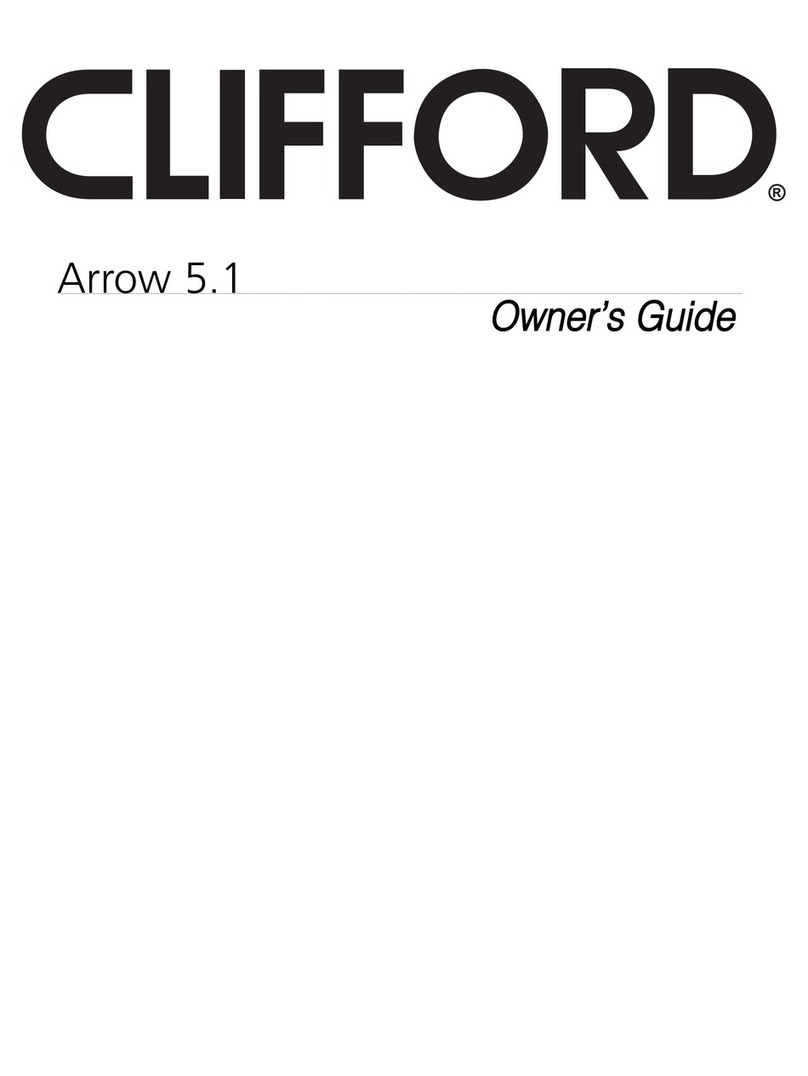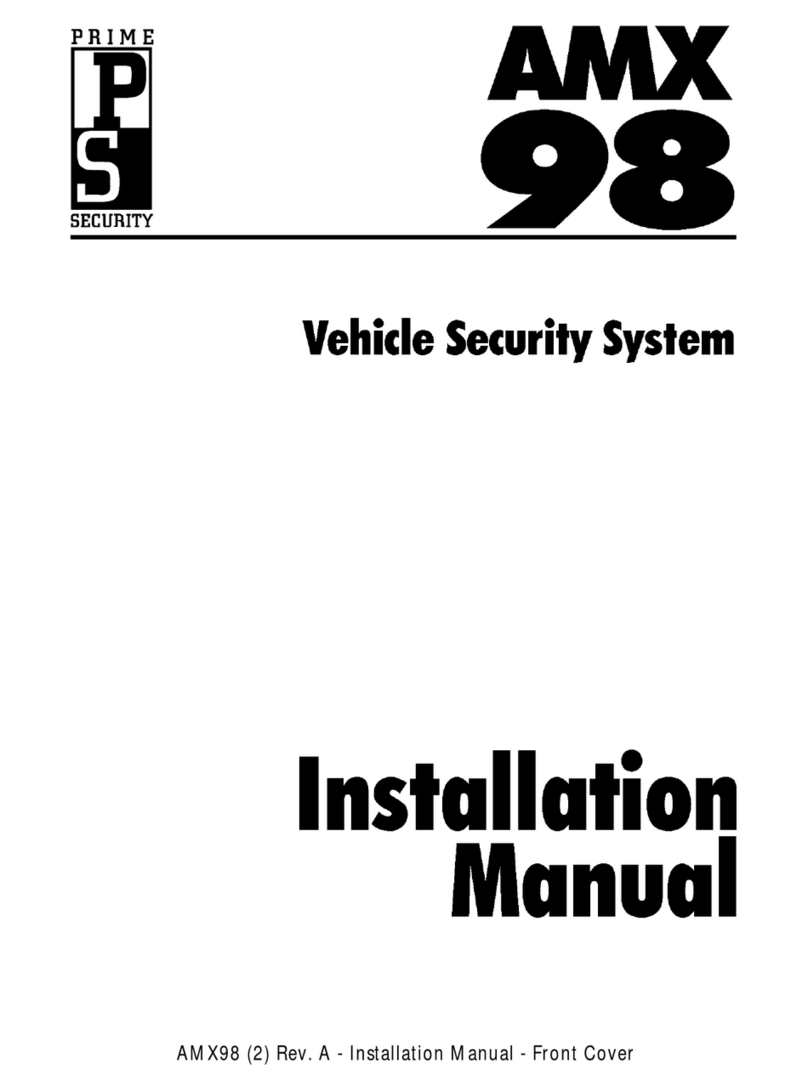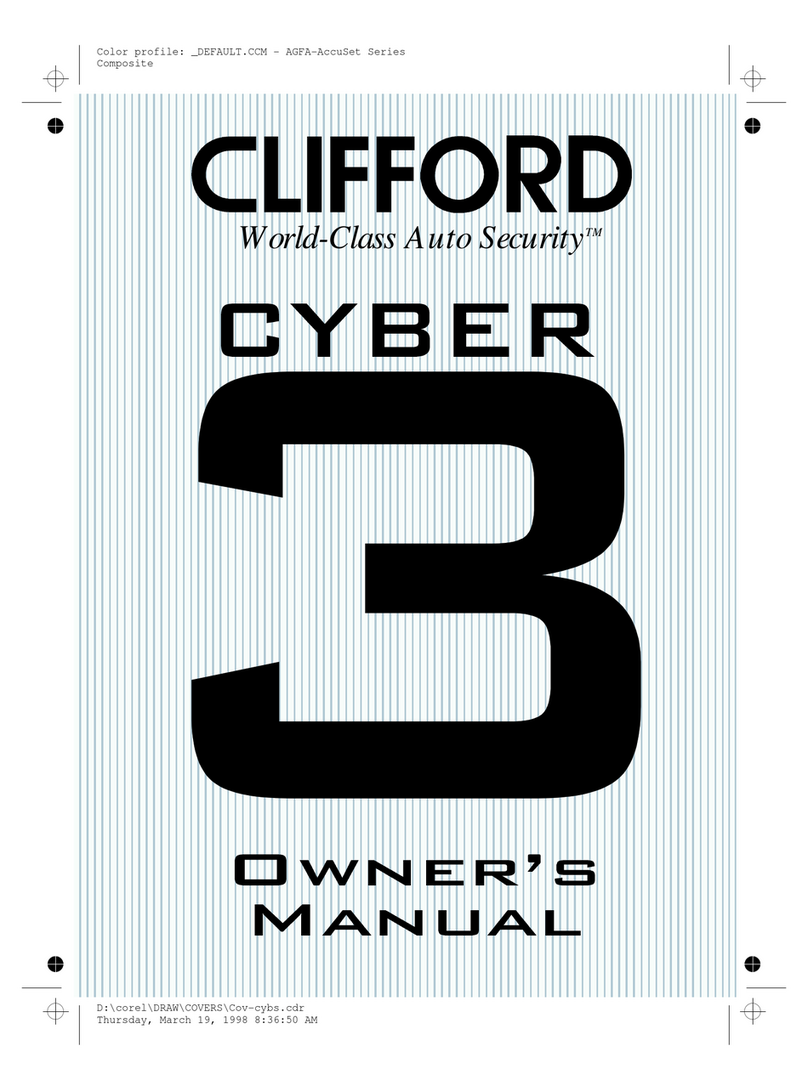Mercury TDS User manual

© 2012 Mercury Marine *8M0072763* 90-8M0072763 612


90-8M0072763 eng JUNE 2012 Page i
TABLE OF CONTENTS
Section 1 - Important Information
Theft Deterrent System–Premium Disclaimer............................ 2
FCC Notice................................................................................ 2
Registration by the Installing Dealer is Important...................... 2
Product Registration............................................................. 2
Information Sharing Agreement................................................. 6
Mercury Theft Deterrent System (TDS) Premium with
Connected Vessel...................................................................... 6
Installation Requirements..................................................... 6
Operation Overview..............................................................6
Installation Details................................................................ 7
Key Fob Use Explanation.......................................................... 7
Important Information about Transporting Over Land.......... 8
Section 2 - Installation
Theft Deterrent System Kit Installation (Key Fob).................... 10
Guidelines for Installing Harnesses.................................. 10
Precautions for Wiring and Harnesses............................. 10
Installing the Docking Station........................................... 10
Installing the TDS Module................................................. 11
Wiring Connections........................................................... 11
Boats with Existing 10 Pin Harness at the Helm.......... 11
Boats without 10 Pin Harness at the Helm................... 12
Troubleshooting................................................................ 13
Theft Deterent System (TDS)–Premium Installation................ 14
Components Contained in Kit........................................... 14
TDS‑Premium Installation................................................. 14
Cable and Harness Connection Diagram..................... 16
System Check................................................................... 16
Securing the Theft Deterrent System (TDS)‑Premium..... 19
Section 3 - Online Tracking
Online Tracking Account Log‑in............................................... 22
Mercury TDS Manager............................................................. 23
Boat View.......................................................................... 23
Information (Vessel Information)....................................... 25
Follow Boat....................................................................... 26
View Logs......................................................................... 27
Alert History.................................................................. 28
GeoFence History.........................................................28
Engine Log................................................................... 29
Fault Log.......................................................................29
Section 4 - Custom Border Configuration (GeoFence)
GeoFence Manager................................................................. 32
Creating a Fence................................................................ 33
Edit, Rename, or Delete a GeoFence...................................... 34
Section 5 - Alert Configuration
Alert Address Configuration..................................................... 36
Alert Definition Matrix............................................................... 36
Help Button.............................................................................. 38
Help Button Function.......................................................... 38
Section 6 - Frequently Asked Questions (FAQ) and Notes
FAQ Mercury TDS Premium.................................................... 42 Notes:....................................................................................... 44

Page ii 90-8M0072763 eng JUNE 2012

Section 1 - Important Information
90-8M0072763 eng JUNE 2012 Page 1
Section 1 - Important Information
Table of Contents
Theft Deterrent System–Premium Disclaimer........................ 2
FCC Notice............................................................................. 2
Registration by the Installing Dealer is Important................... 2
Product Registration ....................................................... 2
Information Sharing Agreement.............................................. 6
Mercury Theft Deterrent System (TDS) Premium with
Connected Vessel.................................................................. 6
Installation Requirements ............................................... 6
Operation Overview ........................................................ 6
Installation Details .......................................................... 7
Key Fob Use Explanation....................................................... 7
Important Information about Transporting Over
Land ................................................................................ 8
1

Section 1 - Important Information
Page 2 90-8M0072763 eng JUNE 2012
Theft Deterrent System–Premium Disclaimer
IMPORTANT: The Mercury TDS is an aid to the operation of the vessel. It is not intended for and should not be used for
navigation purposes. The performance of the system can be affected by many factors including equipment failure,
environmental conditions, improper installation, handling, and use. The Mercury TDS is used at your sole risk and in no event
shall Mercury Marine be liable for any costs, losses, liabilities, damages, expense, or claims of any nature caused by the use of
this device.
FCC Notice
This equipment generates, uses, and can radiate radio frequency energy. Operation of this equipment is subject to the
condition that this device does not cause harmful interference. Modifications or changes to this equipment not approved in
writing by Faria WatchDog Inc. could violate FCC rules compliance and void the operator’s authority to operate this equipment.
An FCC Ship’s Radio License and Operator’s License are not required for the use of this theft deterrent system. The TDS has
been tested and found to comply with the limits for a digital device pursuant to Parts 15 and 80 of the FCC Rules.
Registration by the Installing Dealer is Important
IMPORTANT: Access to the Internet is required to properly register the TDS for use and operation.
IMPORTANT: After opening the kit, locate the mobile transceiver unit (MTU) serial number. Verify the serial number on the
MTU with the decal that has been installed on the last page of this manual. Registration activates the theft deterrent system
and it cannot be activated without this serial number.
The owner must be present with the installing dealer during the registration of the product. The customer must supply a credit
card number to register the product and activate the theft deterrent system. The registering dealer, along with the customer
must create a user name and password. The user name and password are needed for the customer to access the consumer
website. Some of the information the dealer has uploaded can be changed by the customer when the customer is logged into
the consumer website. Ensure the customer information is accurate. If information is incorrectly uploaded into the website, you
must contact Mercury Marine Customer Service to have the errors corrected.
Product Registration
IMPORTANT: Do not use the enter key to move to the next information field during the product registration process. Do not use
the webpage BACK icon button during the registration process.
1. Log into the dealership MercNET site.
2. While in the MercNET site, go to Sales and Marketing, Mercury TDS ‑ Premium Registration.
50305
3. All red field information is mandatory. All black field information is optional, but Mercury recommends that all fields be filled
out.
4. Enter all of the owner, boat, and engine information. This information is used for confirmation of the registration. After filling
out each information window, use the tab key on the keyboard to move to the next information window. When all the
owner's information is entered, click on Add Owner.
NOTE: The user name will automatically be populated when the Verify E‑mail window is filled out. You cannot change this
autopopulated field without changing the e‑mail address, along with the Verify E‑mail window. These two addresses must
be identical.

Section 1 - Important Information
90-8M0072763 eng JUNE 2012 Page 3
IMPORTANT: The password you create must be a minimum of eight (8) characters. The characters can be any
combination of letters, numbers, or special characters; ! @ # $ % ^.
50257

Section 1 - Important Information
Page 4 90-8M0072763 eng JUNE 2012
5. After clicking on Add Owner, the following window allows you to review the information. Click on Next Step.
50258

Section 1 - Important Information
90-8M0072763 eng JUNE 2012 Page 5
6. Enter all of the credit card information. Click on Next Step when finished.
50259
7. Enter the MTU serial number exactly as it appears on the label. The Register Unit icon will populate the window when the
correct MTU serial number is verified. Click on Register Unit to submit the form to Faria WatchDog Inc.
XXXXXX
XXX
XXXXXX
XXX
50260
IMPORTANT: After the Mercury theft deterrent system has been installed, the dealer has verified the system is functional,
and the registration form has been submitted to Faria WatchDog Inc., the TDS must be completely disengaged from the
battery. Faria WatchDog Inc. will not recognize the TDS registration activation unless the battery is completely disengaged
and then reconnected after the registration has been submitted and acknowledged. Acknowledgment of the product
registration is generally less than two hours, but can take up to 24 hours.

Section 1 - Important Information
Page 6 90-8M0072763 eng JUNE 2012
Information Sharing Agreement
The Mercury TDS Premium System ("the System") collects data about you and your boat and motor ("the Data"). The Data may
include status or information about performance, location, operation, and recommended service. The System collects the Data
on a time scheduled basis. The collection of the Data is vital to the operation and functionality of the System. By clicking
"Agree," and subject to applicable law, you hereby agree that Mercury Marine may use the Data for the Services provided by
the System ("the Services") or notify you of boat and motor information or the Services (including sending phone, computer, or
other messages to you relating to your boat and motor), to manage the Services provided by the System, or to protect the
property or safety of you or another party, or to comply with any law or court order (including subpoenas). By clicking "Agree,"
you further agree that Mercury Marine can share the Data with any partner that Mercury Marine has engaged to assist in
providing the Services, provided that said partner agrees that it shall only use the Data to provide said assistance. Mercury
Marine will not otherwise disclose, sell, or rent the Data to any other third party without your consent. Notwithstanding the
foregoing, you further agree that Mercury Marine may provide aggregated information derived from the Data to third parties
without your consent, provided that said aggregated information shall not contain any personal identifiable information, or that
Mercury Marine can provide the Data to the owner of the boat and motor without your consent. For a complete listing of the
terms and conditions governing the System, your use of the System and the use of the Data by Mercury Marine, please refer to
the website at www.mercurymarine.com or contact Mercury Marine for a copy. Mercury Marine may revise these Terms and
Conditions without notice, and advises you to periodically review the Terms and Conditions. While Mercury Marine provides a
limited warranty for the System, Mercury Marine does not guarantee that the System will prevent theft and therefore, cannot
assume responsibility for a stolen boat or motor.
Mercury Theft Deterrent System (TDS) Premium with Connected Vessel
IMPORTANT: It is important that the installer of this product review the installation instructions and thoroughly understand the
process before any component is connected and securely retained.
Installation Requirements
The Mercury theft deterrent system premium with connected vessel has the following installation requirements:
• Mercury theft deterrent system (basic) part number 8M0057383 must be installed and configured to a compatible Mercury
SmartCraft engine before proceeding.
• A SmartCraft junction box with one available port that will provide a CAN P (propulsion) bus in the general installation area.
• A house battery, accessory battery, or battery bank that provides an uninterrupted 12 volts DC source.
IMPORTANT: The TDS‑Premium system installation will not provide continuous security when connected to a power
source that can be turned off: examples of this are battery switches, accessory relays, or the ignition switch. If the power
connections for the TDS‑Premium system can be easily located and disconnected, the system will not provide the
maximum anti‑theft features.
NOTE: Do not connect to an engine battery. The system draws approximately 150 milliamps constantly. Connecting to the
engine battery could result in the engine not starting when needed. An accessory battery with a battery isolator must be
installed, if necessary.
• A flat surface in a remote location for mounting the main transmitting unit (MTU). The MTU can be mounted in any
orientation. However, a horizontal mount is preferred. Do not mount the system in the engine compartment or bilge.
• Access to flat surfaces on the underside of the vessel's deck or some other upper surface for mounting the two antennas.
The selected locations must be made of fiberglass or composite material and have an unblocked view of the sky. Objects
mounted directly above the antenna may disrupt the reception signals to and from the GPS and Iridium satellites. The
antennas will not work through metal or metallic coatings.
• Digital throttle and shift (DTS) engines must have the latest command module software (version 0077).
Operation Overview
The TDS‑Premium is a GPS tracking system with satellite communication. It provides the owner the opportunity to continuously
monitor the location of the vessel. It integrates with the basic TDS and uses the key fob to control the operation mode of
TDS‑Premium. The GPS provides the position of the vessel while the satellite network provides communication between the
TDS‑Premium and a secure internet website. All system configuration and alert setup is performed through the consumer
internet website.
The system uses GPS for coordinates to monitor the vessel's location. When the vessel crosses the security fence boundary,
the satellite network will send an alert e‑mail or text message to the addresses designated by the vessel owner. E‑mail and text
message addresses must be configured on the website. Additionally, position reports are transmitted through the satellite
network every minute and are archived in the website when the vessel crosses a security fence boundary. All alert notifications
are configured through a secure internet website. There are several different borders used in TDS‑Premium, all of which are
explained in the following information.
IMPORTANT: It is important to understand that every instance of reports or alerts transmitted through the Iridium satellite
network increases the amount of data used in your data plan.

Section 1 - Important Information
90-8M0072763 eng JUNE 2012 Page 7
Key fob – The key fob arms and disarms the theft deterrent system and controls the frequency and type of alert messages sent
while in or out of the security perimeter.
Security fence – A security fence is a virtual 152.4 m (500 ft) radius border around the last recorded GPS position when the
system is armed. Vessel position reports are transmitted every four hours while the vessel remains inside the security fence. If
the vessel crosses the virtual security fence, it is considered unauthorized and alerts will be transmitted as configured by the
owner. When the vessel crosses the security fence, position reports are transmitted through the satellite network every minute
to allow detailed tracking for a swift recovery. The security fence is not visible on the website.
Containment fence – A containment fence is a virtual predefined perimeter boundary based on GPS coordinates. This virtual
containment fence is configured on the secure internet website. Position reports are provided when the vessel has exited the
containment fence. The timing of the boundary crossing and the position report alert may not be synchronized. A containment
fence is visible on the website with the color green.
Hazard fence – A hazard fence is a virtual predefined perimeter boundary based on GPS coordinates. All conditions for the
hazard fence are identical to the containment fence with exception to the color. This would be most useful to identify areas you
wish the vessel to avoid. A hazard fence is visible on the website with the color red.
Installation Details
• The overall installation should be as inconspicuous as possible since it is not meant to be seen and does not require any
operator input. The installation of the parts and harnesses should blend in with the existing vessel harnesses and modules.
The more difficult it is to identify and determine its function, the more secure the installation. If the system can be easily
located, it could be compromised.
• The components should be held in the proposed location with tape (not included) to test the system prior to a permanent
installation. This test will verify the system and antenna operation before permanent installation, for example: drilled holes,
activating heat shrink, and using the adhesive pads on the antennas. Do not skip this important process.
• The antennas are specific for up and down orientation. They will not function if mounted upside down. Do not attach the
adhesive pad to an antenna until you are sure where and how it will be mounted.
• The Iridium satellite antenna must be mounted far enough away from any magnetic pole sensing component so not to
interfere with the operation of these types of components. Examples of these components are a compass or an internal
measurement unit (IMU). The Iridium satellite antenna is manufactured with a strong internal magnet that will affect these
type of components.
• Keep all system parts far away from known sources of electromagnetic interference (EMI) and radio frequency interference
(RFI). Examples of these interference sources are: marine radios, radar systems, high‑powered audio amplifiers and
speakers, and engine ignition systems.
• Fasten and support the harness with clamps or cable ties along the routing path. A clamp or cable tie must be used within
25 cm (10 in.) of any connection and every 46 cm (18 in.) along the routing path if not housed in a rig tube.
Key Fob Use Explanation
The key fob is an important component link in the operation of the theft deterrent system.
• When the key fob is not inserted into the docking station, the TDS‑Premium is armed (locked) and a virtual 152.4 m (500 ft)
radius security fence around the last recorded GPS position is established. In this mode, vessel position reports are
transmitted every four hours while the vessel remains inside the security fence radius. If the vessel crosses the virtual
security fence boundary, it is considered unauthorized and alerts will be transmitted as designated by the owner. When the
vessel crosses the security fence boundary, position reports are transmitted through the satellite network every minute to
allow detailed tracking for a swift recovery. The security fence is not visible on the website.
• When the key fob is inserted into the docking station, the TDS‑Premium is disarmed (unlocked) and the virtual security
fence is deactivated. The system believes the owner has authorized the control of the operation of the vessel and the
vessel has unrestricted travel. Position reports will continue to be transmitted through the satellite network every half hour
by default.
• When the ignition is turned off with the key fob inserted, a virtual security fence 152.4 m (500 ft) radius is established.
Vessel position reports are transmitted every four hours while the vessel remains inside the security fence radius. If the
vessel crosses the virtual security fence boundary when trailered, towed, or has drifted out of the virtual security fence, it is
considered unauthorized and alerts will be transmitted as designated by the owner. When the vessel crosses the security
fence boundary, position reports are transmitted through the satellite network every minute.
• When the key fob is removed from the docking station while the ignition is in the on position and the engine is running, the
theft deterrent system remains deactivated. No virtual security fence is established and the vessel can continue to operate.
When the ignition is turned off with the key fob removed from the docking station, a virtual security fence boundary is
quickly established. If the key fob is not inserted when the engine is started, engine operation will be limited and the virtual
security fence remains armed (locked). The key fob must be inserted into the docking station to disarm the virtual security
fence, allowing the engine to operate within normal parameters.

Section 1 - Important Information
Page 8 90-8M0072763 eng JUNE 2012
Important Information about Transporting Over Land
When transportation over land is required, it is assumed the ignition key switch and key fob are removed. When the key fob is
not installed into the docking station, the TDS‑Premium is armed (locked) and a virtual 152.4 m (500 ft) radius security fence
around the last recorded GPS position is established. Vessel position reports are transmitted every four hours while the vessel
remains inside the security fence. When the vessel crosses the virtual security fence boundary, alerts will be transmitted as
configured by the owner and position reports will be made every minute while the vessel is outside the security fence while in
motion. When the vessel is stationary for 15 minutes, a new security fence is established, transmitting position reports every
four hours. When the vessel crosses the new security fence boundary, alerts will be transmitted and position reports will be
generated every minute, which can lead to higher data usage and additional charges.

Section 2 - Installation
90-8M0072763 eng JUNE 2012 Page 9
Section 2 - Installation
Table of Contents
Theft Deterrent System Kit Installation (Key Fob)................ 10
Guidelines for Installing Harnesses............................... 10
Precautions for Wiring and Harnesses.......................... 10
Installing the Docking Station........................................ 10
Installing the TDS Module..............................................11
Wiring Connections........................................................11
Boats with Existing 10 Pin Harness at the Helm ... 11
Boats without 10 Pin Harness at the Helm ............ 12
Troubleshooting............................................................. 13
Theft Deterent System (TDS)–Premium Installation............. 14
Components Contained in Kit........................................ 14
TDS‑Premium Installation.............................................. 14
Cable and Harness Connection Diagram .............. 16
System Check................................................................16
Securing the Theft Deterrent System (TDS)‑Premium
....................................................................................... 19
2

Section 2 - Installation
Page 10 90-8M0072763 eng JUNE 2012
Theft Deterrent System Kit Installation (Key Fob)
Guidelines for Installing Harnesses
Follow these guidelines when installing the harnesses:
• The maximum CAN bus length is 70 m (230 ft).
• The maximum length of a CAN bus drop (branch off the main harness) is 7 m (23 ft).
• The combined length of all drops cannot exceed 36 m (118 ft).
• Locate an appropriate path for routing the harness connections to their installation points.
• Inspect the routing path to ensure that the surfaces are free of any sharp edges or burrs that could cut the harness.
• Fasten and support the harness with clamps or cable ties along the routing path. A clamp or cable tie must be used within
25.4 cm (10 in.) from any connection and every 45.8 cm (18 in.) along the routing path if not housed in a rig tube.
• Ensure that all connections are tight and locked (if equipped with a lock mechanism).
• Seal all unused connectors with weather caps.
• Route the harness at least 1 m (3 ft 3 in.) from any device that produces electromagnetic interference (EMI), such as VHF
radio and radar equipment.
Precautions for Wiring and Harnesses
IMPORTANT: Refer to the following precautions to avoid damage to the electrical system when working on or around the
electrical harness or when adding other electrical accessories.
• Do not attempt diagnostics without the proper approved service tools.
• Do not puncture wires for testing (probing).
• Do not splice wires into the harness.
• Do not connect, network, tie into, switch, or sink source voltage or current from the wiring harnesses.
• Do not connect any type of communication or navigation equipment into the wiring harnessing other than at the designated
connection point.
• Install boat accessory equipment using an appropriate power source connection, such as a fuse panel or junction box
circuit breaker.
• Do not tap directly into any of the electrical wiring harnesses for a source of power.
Installing the Docking Station
1. Select a mounting location for the docking station that provides the following:
• The docking station must not be closer than 102 mm (4 in.) from any device that produces electromagnetic
interference (EMI), such as VHF radio and radar equipment.
• The docking station must be installed within 1.2 m (4 ft) of the TDS module. The docking station harness cannot be
extended. Refer to Wiring Connections.
• Ensure the mounting location affords accessibility from behind the dashboard.
2. Use a hole saw and cut a 54 mm (2‑1/8 in.) mounting hole for the docking station.
3. Place the gasket onto the docking station.
4. Place the docking station into the mounting hole. Secure with the retainer nut.
a - Docking station
b - Gasket
c - Mounting location
d - Retainer nut
47945
abcd

Section 2 - Installation
90-8M0072763 eng JUNE 2012 Page 11
Installing the TDS Module
1. Select a mounting location for the TDS module that provides the following:
• Mount the TDS module in an area that stays relatively dry.
• The TDS module must be installed within 1.2 m (4 ft) of the docking station. The docking station harness cannot be
extended. Refer to Wiring Connections.
• If the TDS module is mounted on a vertical surface, orient the connectors towards the side or downward.
• Allow a minimum clearance of 10 cm (4 in.) for connector installation and removal.
2. Fasten the module to a flat surface with the screws and flat washers provided.
a - TDS module
b - Minimum clearance for connector installation and removal
c - Mounting screws and flat washers (2)
Wiring Connections
Boats with Existing 10 Pin Harness at the Helm
• Plug the 10 pin connector (from the TDS wiring harness) into the junction box. Refer to the following wiring diagram. For
multiengine applications, it must be connected to the multiwake or VesselView display junction box.
• Plug the existing 10 pin connector (located at the helm) into the junction box. Refer to the following wiring diagram.
• Plug the 8 pin connector from the docking station into the 8 pin connector on the TDS wiring harness. Refer to the following
wiring diagram.
• Plug both 12 pin connectors (from the TDS wiring harness) into the connectors on the TDS module. The connectors are
keyed to ensure correct orientation. Refer to the following wiring diagram.
47955
c
a10 cm
(4 in.)
b

Section 2 - Installation
Page 12 90-8M0072763 eng JUNE 2012
• Refer to the following wiring diagram for the proper wiring connections.
Single engine with existing 10 pin harness at the helm
a - Docking station
b - TDS wiring harness
c - Junction box
d - 10 pin existing harness
e - Termination resistor
f - 10 pin connector
g - 14 pin connector
h - Engine
i - TDS module
Boats without 10 Pin Harness at the Helm
• Plug the 10 pin connector (from the TDS wiring harness) into the junction box. Refer to the following wiring diagram. For
multiengine applications, it must be connected to the multiwake or VesselView display junction box.
• Remove the termination resistor from the 10 pin connector on the engine. Connect a SmartCraft 10 pin (one resistor) data
harness (blue) between the 10 pin connector on the engine and the junction box. Connect the end of the data harness
(which has the resistor) to the 10 pin connector on the engine. Refer to the following wiring diagram.
• Install the termination resistor into the junction box. Refer to the following wiring diagram.
• Plug the 8 pin connector (from the TDS wiring harness) into the 8 pin connector from the docking station. Refer to the
following wiring diagram.
• Plug both 12 pin connectors (from the TDS wiring harness) into the connectors on the TDS module. The connectors are
keyed to ensure correct orientation. Refer to the following wiring diagram.
a
b
c
d
e
f
g
h
i
48467

Section 2 - Installation
90-8M0072763 eng JUNE 2012 Page 13
• Refer to the following wiring diagram for the proper wiring connections.
Single engine without 10 pin harness at the helm
a - Docking station
b - TDS wiring harness
c - Junction box
d - Termination resistor
e - SmartCraft 10 pin (one resistor) data harness (blue)
f - Resistor (in‑line)
g - 10 pin connector
h - 14 pin connector
i - Engine
j - TDS module
Troubleshooting
NOTE: The electronic code of the theft deterrent system is unique and is electronically matched to the engine. If the engine is
ever removed from the boat and fitted to another craft, the engine may require reprogramming. Contact your authorized
Mercury dealer.
a
b
c
d
e
f
h
g
i
j
48468

Section 2 - Installation
Page 14 90-8M0072763 eng JUNE 2012
Theft Deterent System (TDS)–Premium Installation
Components Contained in Kit
49834
a
b
c
f
g
h
i
d
e
Ref. Qty. Description
a 1 Mobile transceiver unit
b 1 Parts bag
c 1 SmartCraft harness
d 1 User interface bezel
e 1 User interface
f 1 Retainer
g 1 Iridium satellite antenna
h 1 GPS antenna
i 1 Power harness
TDS‑Premium Installation
IMPORTANT: TDS‑Premium requires command module version 77 or greater.
IMPORTANT: It is important that the installer of this product review the installation instructions and thoroughly understand the
process before any component is connected and securely retained.
IMPORTANT: Do not permanently mount any component of the theft deterrent system until advised to do so.
IMPORTANT: CDS‑G3 must be used to display fault numbers and fault text when the TDS‑Premium has been properly
configured into the SmartCraft network. CDS will only display fault numbers.

Section 2 - Installation
90-8M0072763 eng JUNE 2012 Page 15
1. Locate an area under the deck of the vessel to mount the two antennas less than 3 m (9 ft) from the mobile transceiver unit
(MTU). Use tape (not included) to temporarily retain the antennas to the underside of the deck. The antennas must have
an unobstructed view of the sky, and cannot be closer than 7.6 cm (3.0 in.) to each other.
2. Temporarily mount the mobile transceiver unit (MTU) in an area where there is easy access to the antenna cables, a
SmartCraft junction box, and a power source or accessory battery. The power source or accessory battery connection
must be uninterrupted.
3. Install the shrink tube over the GPS antenna cable and Iridium satellite antenna cable ends.
4. Connect the GPS antenna cable to the J1 connector on the MTU and tighten securely. Do not use any tools to tighten this
connector. Do not apply heat to the shrink tube.
5. Connect the Iridium satellite antenna cable to the J3 connector on the MTU and tighten securely. Do not use any tools to
tighten this connector. Do not apply heat to the shrink tube.
a - GPS antenna connection
b - Iridium satellite antenna connection
c - Shrink tube
6. Connect the SmartCraft harness connector to the B connector on the MTU. Connect the other end of the harness to a
junction box.
7. Connect the power harness connector to the A connector on the MTU.
NOTE: The MTU connector ports are keyed specifically for the harness that it can accept. Do not force the harness
connectors onto the MTU. If installed incorrectly, the harness connectors can be forced into the wrong MTU connector port.
a - Power harness A connector
b - SmartCraft harness B connector
c - Harness connector key
8. Connect the power harness 4 pin connector onto the user interface connector.
9. Secure the red and black power harness terminals to an uninterrupted power source. Red is positive and black is negative.
J1
J3
49839
a
b
c
A
B
a
b
c
49840

Section 2 - Installation
Page 16 90-8M0072763 eng JUNE 2012
Cable and Harness Connection Diagram
a - Mobile transceiver unit (MTU)
b - Iridium satellite antenna
c - GPS antenna
d - User interface
e - Power harness
f - SmartCraft harness
g - 5 amp fuse
h - Battery
i - Junction box
System Check
1. When the power harness is connected to a battery source with the user interface connected, the display on the interface
should show COMM or no COMM.
NOTE: The vessel must have an unblocked view of the sky. If the vessel is beneath a metal or metallic coated roof, the
antenna will not be able to communicate with the satellite.
a
b
c
d
e
f
g
h
i
49870
Table of contents

